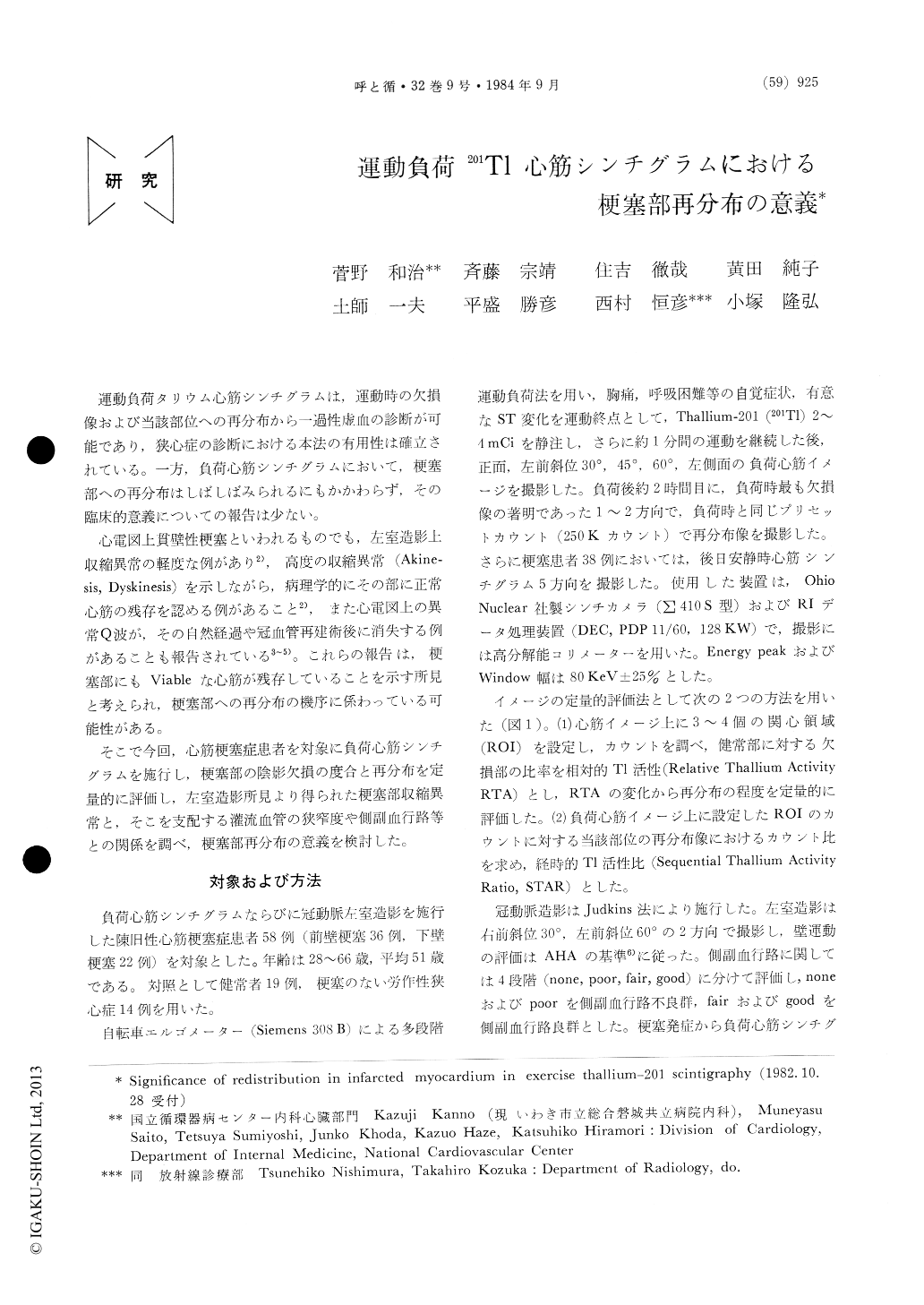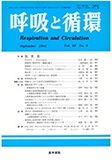Japanese
English
- 有料閲覧
- Abstract 文献概要
- 1ページ目 Look Inside
運動負荷タリウム心筋シンチグラムは,運動時の欠損像および当該部位への再分布から一過性虚血の診断が可能であり,狭心症の診断における本法の有用性は確立されている。一方,負荷心筋シンチグラムにおいて,梗塞部への再分布はしばしばみられるにもかかわらず,その臨床的意義についての報告は少ない。
心電図上貫壁性梗塞といわれるものでも,左室造影上収縮異常の軽度な例があり2),高度の収縮異常(Akine—sis, Dyskinesis)を示しながら,病理学的にその部に正常心筋の残存を認める例があること2),また心電図上の異常Q波が,その自然経過や冠血管再建術後に消失する例があることも報告されている3〜5)。これらの報告は,梗塞部にもViableな心筋が残存していることを示す所見と考えられ,梗塞部への再分布の機序に係わっている可能性がある。
This study was performed to obtain clinical interpretations on the redistribution (RD) in infarcted area in exercise Tl scintigraphy (ETS). Fifty eight patients with old myocardial infarction (MI) who underwent selective coronary angio-graphy and left ventriculography were studied ETS as well as resting images in 38 patients. Exercisewas performed using bicycle ergometer and Tl was injected at the endpoint generally accepted. RD was quantitatively defined by the follwing two methods ; 1) changes in relative Tl activity (RTA), a ratio of Tl activity in infarcted area to that of normal area, 2) sequential Tl activity ratio (STAR), a ratio of Tl activity in infarcted area in RD image to that in exercise image.
In patients with anterior MI, RD was none in cases with severely impaired (dys. or akinetic) left ventricular (LV) wall motion with no collaterals but RD was observed in other cases. The extent ofRD was correlated with RTA of infarcted area in resting images, indicating that RD was related to the amount of viable myocardium in infarcted area. RD was also correlated with the severity of coronary stenosis responsible for the infarcted area. However, in cases with 99-100% stenosis with no collaterals, most of whom had dyskinetic LV wall motion, RD was less compared to those with good collaterals. These findings indicated that RD to the infarcted area was defined by two factors, the extent of viable myocardium in infarcted area and the severity of stenosis responsible for the area.

Copyright © 1984, Igaku-Shoin Ltd. All rights reserved.


